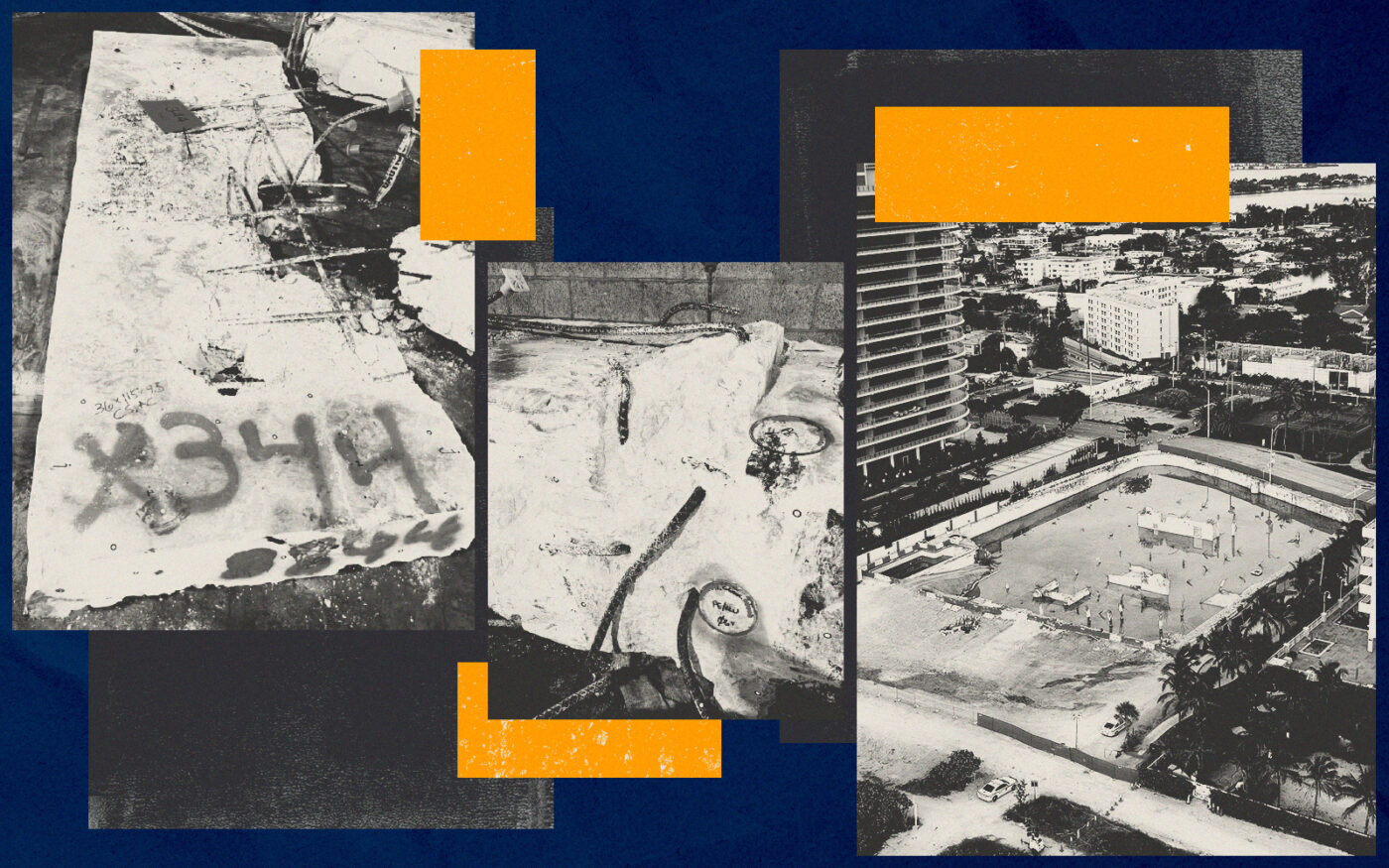 Year since deadly collapse marked by condo reforms, new development in Surfside
Year since deadly collapse marked by condo reforms, new development in Surfside
Surfside collapse investigation finds deeper issues with pool deck
Analysis shows wider than required spacing between concrete slab reinforcement bars

Champlain Towers South’s pool deck construction differed from design requirements, federal investigators determined, adding to mounting indicators that this area was the root of the deadly collapse.
The National Standards of Institute and Technology’s latest findings, revealed on Thursday, show reduced reinforcement of the pool deck “further reduced the strength of the pool deck slab-to-column connections from the already compromised conditions” that NIST reported in June, said Glenn Bell, associate lead investigator.
The collapse of the oceanfront Surfside condominium building at 8777 Collins Avenue in June 2021 killed 98 people.
The new findings show the design required that at least 25 percent of the slab reinforcement bars “be centered” and “pass over” each column, Bell said during the NIST presentation. But in most cases, this threshold wasn’t met. In one column, just two reinforcement bars out of 16, or 12.5 percent, centered over the column.
Investigators also determined that slab reinforcement bars in some columns were spaced farther than the design requirement of 20 percent to 40 percent spacing.
“This means that there was less reinforcement in the vicinity of the columns than the design required,” Bell said.
The findings come after NIST’s presentation in June showed investigators found the pool deck design fell short from building codes, and slab columns and fixtures had “severe” strength flaws at several places in the pool deck. Those findings showed slab reinforcements were placed two inches deep into concrete slabs, instead of the three-quarter inch required depth.
“I had reported in June that shortcomings in the original design of CTS, misplacement of slab reinforcement, loads added over time and potentially corrosion of the steel reinforcement combined to create critically low margins of failure in the pool deck slab,” Bell said. The newly discovered construction deviations “further weaken[ed] those slab column connections, further reducing the critically low margins against failure.”
The pool deck was determined to have issues even prior to the collapse. An engineer’s report prepared in 2018 — for the building’s 40-year recertification — found significant concrete cracking and spalling caused “major structural damage” to the slab below the pool deck, as well as failed waterproofing.
NIST also is testing for sinkholes or other foundational shifts. Findings so far show foundation settlement of a quarter inch, which was not significant enough to impact the structural integrity of Champlain Towers South, Bell said.
“We are continuing to study these effects, and we are also continuing to evaluate other geotechnical effects such as the impact of the construction of Eighty Seven Park,” Bell said, referring to the condo tower immediately south of Champlain Towers South, which a Terra-led development team completed in 2019.
NIST also has hired an outside contractor to restore seven security video hard drives in hopes of reconstructing collapse footage from various angles. Authorities recovered over a dozen camera hard drives, but the majority were damaged beyond repair, said Judith Mitrani-Reiser, lead investigator.
Bell pointed to a video of the early stages of the collapse recorded on a unit owner’s home camera. At first, the footage shows debris falling “straight down” in the unit but then it starts falling “at an angle.”
“That’s very curious,” he said. “We think it really holds important information about the collapse.”
NIST’s investigation is expected to be completed by the fourth anniversary of the collapse in 2025. The agency said findings are based on an ongoing investigation and are not yet conclusive.
A class action lawsuit over the tragedy was settled last summer, with more than $1 billion paid to survivors and victims’ families. Then-Miami-Dade Circuit Court Judge Michael Hanzman oversaw the litigation, including the court-ordered $120 million sale of the property to Dubai developer Damac Properties.
Damac plans a luxury condominium on the site. It has created significant controversy in part over a failed proposal to include a memorial on the property. A memorial is planned for the street immediately north of the site.
Read more
 Year since deadly collapse marked by condo reforms, new development in Surfside
Year since deadly collapse marked by condo reforms, new development in Surfside
 This is what’s next for Damac’s plan for luxury condos on Surfside collapse site
This is what’s next for Damac’s plan for luxury condos on Surfside collapse site
 “Garbage is garbage”: Damac’s condo plan for trash pickup next to memorial angers victims’ families
“Garbage is garbage”: Damac’s condo plan for trash pickup next to memorial angers victims’ families




